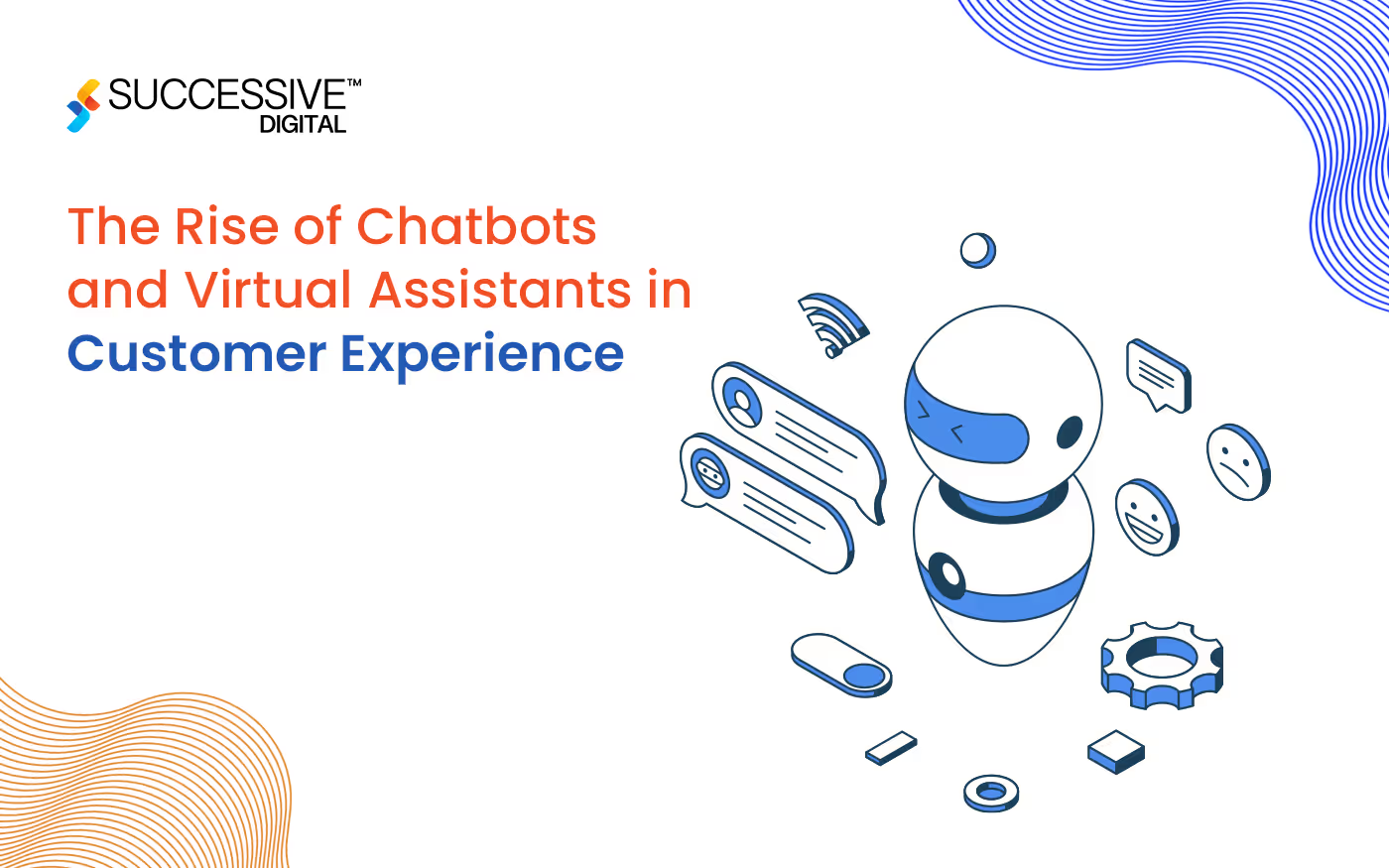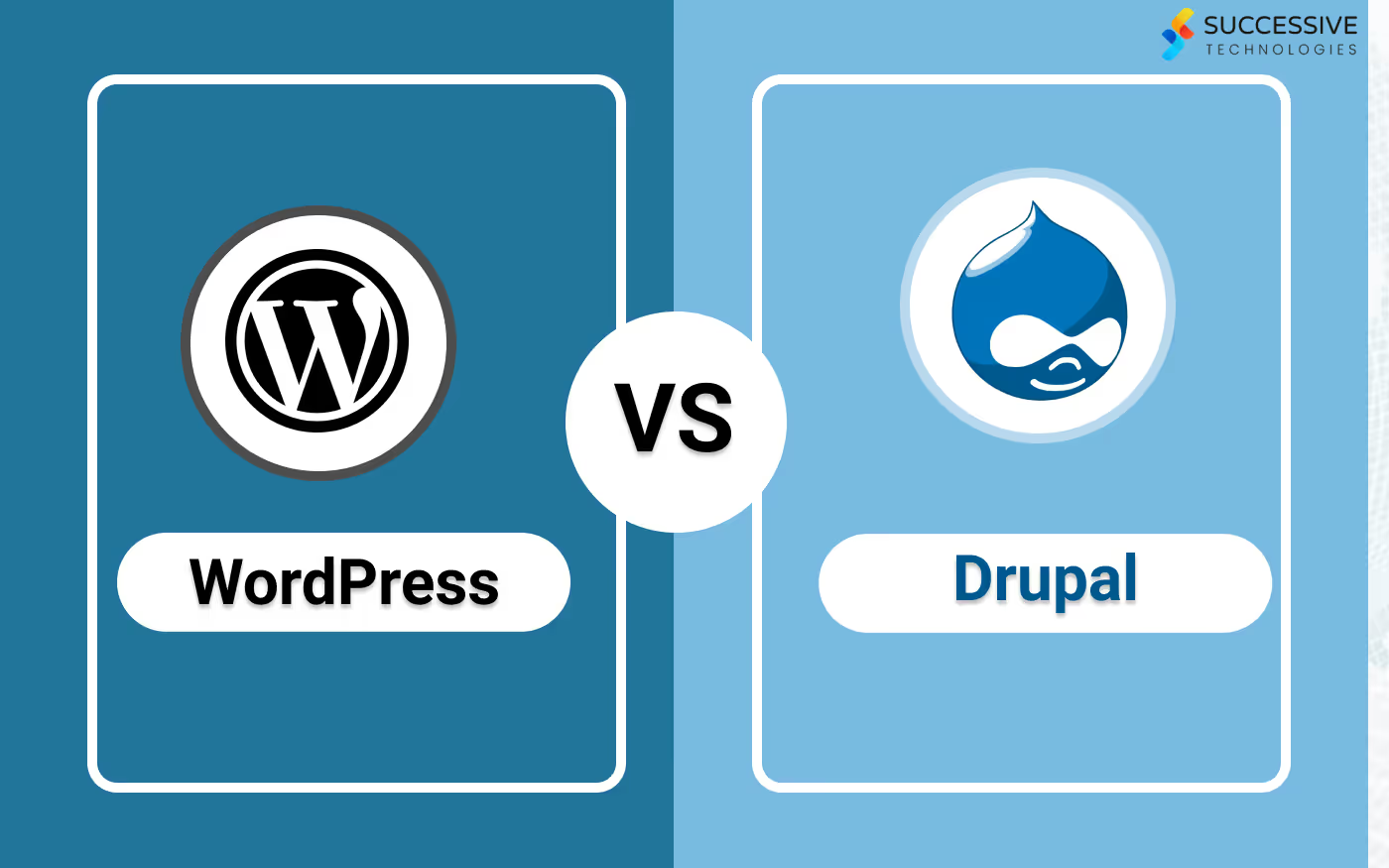Chatbots and virtual assistants are used by almost every industry, including banking, real estate, travel, education, healthcare, and retail, to improve customer experience and streamline user interaction. In fact, many of us have already been having conversations with bots via Siri or Alexa for decades. Nowadays, it's difficult to have an online encounter without a chatbot participating in some way or another. These bots help customers retrieve information, which adds value to their experience. Over the years, these chatbots have massively evolved, impacting how customers interact with a company or brand.To add to this remark, the market size of chatbots was valued at $4.7 billion in 2022 and is expected to increase to $15.5 billion by 2028. To understand the impact of chatbots on customer experience, we’ll thoroughly examine and evaluate their rise and technical advancements over the years.
Types of Chatbot Solutions for Customer Experience
Since its inception, chatbots have made a quantum leap forward in user support, contributing substantially to managing customer and employee support.Even in their earliest form as live solutions, they promised versatile new advances to come, such as sentiment tracking, NLP, machine learning, and generative AI. Chatbots are typically present in many types of software, with increasing levels of automation.
Live Solutions
Live solutions are web-based chats with a human agent that provide detailed user involvement on specific, complex, or sensitive topics. They can also be supplemented by automated routing systems.In live solutions, chatbots take on the initial level of work by knowing what the customer wants to know and efficiently directing customer inquiries to the appropriate resources or departments. Later, the software directs the query to the most suitable support agent respond in real-time. This ensures that customer inquiries are handled promptly and accurately, improving customer satisfaction and operational efficiency.
Rule Based Chatbots
Rule-based bots respond to interactions using predetermined rules. Users engage with these bots by selecting from a predefined menu of alternatives, similar to how a phone routing system works. Users can easily connect with a business via text, yet the interaction remains simple.The rule-based chatbot uses a decision-tree flow to lead users through a series of follow-up questions before concluding. The conversation structure, follow-up inquiries, and replies are predefined, allowing the company to control the overall experience with the company’s customer-bot. Rule-based chatbots adhere to extremely simple or complex rules, depending on the varied business use cases. However, they can only react to user questions within the stated rules.
Workflow of a Rule-based Chatbot Decision Tree
Traditional rule-based chatbots require manual training, which could take six to nine months and require engineers and experts. Because they could not learn autonomously, rule-based chatbot training is not a one-time event but rather an ongoing, continuous process.These chatbots must also meet the rising user expectation of personalization, including contextual understanding at all times. Only sophisticated AI can provide that quality of user experience. As a result, chatbots have now arrived in the new AI era.
AI-Powered Chatbots
The next leap of innovation in the chatbots was marked by the introduction of AI-powered chatbots. These AI chatbots are computer programs that smartly communicate with users through text-based interfaces on websites, social media platforms, and messaging apps. AI chatbots are able to self-learn and improve their intelligence with every human interaction through NLP, RPA, deep learning, cognitive science, and machine learning, which is considered the most advanced version of AI that evolved over a period of time. The one thing that distinguishes rule-based chatbots from AI chatbots is their ability to comprehend the questions and how they respond to them.Unlike traditional chatbots, AI-powered chatbots use natural language processing (NLP) to conduct human-like conversations and can execute complex tasks while referring requests to a human agent as needed.These conversational AI-powered chatbots offer even more enhanced functionality, such as:
- Fluency in understanding common language
- Ability to adapt to a user’s style of conversation
- Using empathy when answering users’ questions
To answer human queries, these chatbots utilize machine learning to enhance interaction patterns and natural-language processing to recognize and interpret human speech. With emerging technologies and advancements in machine learning, deep learning, and cognitive-based learning mechanisms, AI-powered chatbots emerged to deliver text and voice bots experiences within mobile and web applications. Let’s explore both the AI-powered chatbots in the below:
Textual Chatbots
Text-based chatbots utilize AI and interact with users through text-based interfaces, requiring users to type their queries. Text-based AI chatbots intelligently react to user requests using advanced technologies such as NLP and advanced analytics. When users interact with the chatbot, the NLP model processes their input, analyzing it to determine keywords, phrases, and overall meaning. These bots are trained on various parameters that let them generate text-based answers; these parameters are-
- User intent
- Promot context
- Prompt sentiment
- Contextual responses based on the prompts
How an AI Chatbot Works
- The systems employ natural language processing (NLP) to analyze the text and determine the user's concern (intent).
- After the intents are recognized, the necessary action is performed via the underlying API connections within the Dialog Management module and returned to the user as the answer.
- Once an assistant has created a response, the information is sent to the output module. The module evaluates the received data, constructs a narrative structure, mixes words and sentence elements, and follows grammatical rules.
Voice Chatbots
The second and the most interactive chatbot that emerged in the history of chatbots is voice bots such as Alexa, which makes its presence among command households besides businesses. A voicebot, also called a voice assistant or virtual assistant, is an AI-based chatbot that interacts with users through spoken language. Some significant examples of these voicebots are AI assistants like Amazon Alexa, Siri, and Google Assistant.Just like textual chatbots, voicebots rely on Natural Language Processing (NLP). However, the key difference is that voice bots interact with users through spoken language instead of written text. This happens through Speech Recognition technologies, which let voice bots understand and respond to user queries, perform tasks, and provide information through voice commands.Voice bots work hand-in-hand with voice-controlled devices such as smartphones, smart speakers, and IoT devices.
How does a Voicebot Model Answer the Question?
Everything begins with the user's input, which is exactly what the user said, such as "How much time will it take to travel through the Moscow to Vladivostok train?"At first, to convert spoken language, speech recognition engines generate text from speech that NLP can use. When a system receives a message, it is routed to the intent analyzer and entity extractor module under the NLU toolkit.The NLU component recognizes sections of the input that have a specific meaning. The entities are usually noun-based and can be extracted using machine learning, hardcoded criteria, or both.The obtained information, which includes intent and entities, is subsequently transmitted to the dialogue management module.The dialogue engine answers the user through the user interface: "It will take six days to cover the route of 9,289 kilometers."
A Rise and Shift to Generative AI Chatbots
Chatbots have long been used, updated, and upgraded by businesses as a first-line support system to answer frequently asked queries once a user navigates through the website or applications. While conversational AI chatbots digest a user’s questions or comments and generate a human-like response based on provided predefined answers, advanced versions of AI chatbots take this a step further by utilizing generative AI capabilities to develop a whole new piece of answer as the output in response to the user’s input or questions asked. Generative AI chatbots have rapidly become indispensable tools across various industries. They are widely transforming the way humans interact with technology. Gen AI chatbots are not just chatting software anymore; they've evolved into multimodal systems capable of understanding both language and visual information and generating responses in multiple languages and formats. This makes them some of the most sophisticated AI tools ever available in the history of artificial intelligence. Generative AI-powered chatbots utilize large language models (LLMs) to power natural-language interaction with users and perform a variety of tasks and activities, such as writing, research, and creative work.
- Gen AI chatbots collect and process data from various sources to train their language models.
- The core of a Gen AI chatbot is its generative model like GPT (Generative Pre-trained Transformer, which is trained on vast amounts of text data to learn patterns and generate coherent responses.
- They utilize NLP techniques to comprehend the context and meaning behind user queries rather than just matching keywords.
- A dialog manager keeps track of the conversation flow, maintaining context and adjusting responses based on previous interactions.
- Once the chatbot has determined the intent and context, it generates a response using NLG (Natural language generation) techniques.
- With every interaction, Gen AI chatbots continuously learn and improve.
Gen AI Chatbot Example
Delta Airlines launched their generative AI chatbot, "Ask Delta," to help customers take action — check-in, track bags, and find flights. Their generative AI chatbot provides detailed responses at lightning speed, making it simple for customers to see what they need — and get where they're going.
AI Chatbot Benefits For Companies
- Improved service with every interaction:
Customers today hate to wait for their queries and want fast and easy service, even during peak hours, and dread hearing, “I’ll get right back to you.” AI chatbots answer those questions quickly, around the clock, even in peak times. Implementing chatbots or automated assistants eliminates wait times with instant support because chatbots never sleep; they can provide global, 24/7 support at the most convenient time for the customer, even when agents are offline.For example-Hilton’s AI-powered chatbot, Connie, serves as a hotel assistant and is available 24/7 to assist guests with requests, inquiries, reservations, and questions. Connie is powered by natural language processing and learns from guests' queries and context to provide user-friendly assistance.
- Speak your Customer’s Language:
Using multilingual features in generative AI virtual assistants, customers can speak their customers' language. By utilizing advanced technology, these chatbots enable accessible communication in the customer's native language instead of forcing the customer to communicate in just one language. This increases personalization and gives customers the satisfaction of getting their queries solved as they want. This allows companies to cater to customers from different regions and cultural backgrounds, providing a personalized experience in their native tongue.Through real-time translation, the chatbots ensure that language barriers do not hinder the customer experience and allow for efficient problem-solving and information exchange.
- Boost Customer Engagement:
The adoption of virtual assistant chatbots in CX improves customer interaction by fine-tuning the way businesses engage with their audience and reshaping online marketing strategies. These intelligent virtual assistants leverage AI technology to provide a streamlined experience through,
- Personalizing customer service
- Guiding users through websites
- Offering real-time assistance
- And enhancing the overall customer experience by solving small queries.
A Gartner’s research says that by 2027, “chatbots will become the primary customer service channel for roughly a quarter of organizations”.
Key Consideration For Companies Adopting Digital Customer Assistants
To address evolving customer expectations, organizations must develop new competencies to become aware of contexts, offer the ability to use multiple channels, and provide seamless handovers between different digital channels. Hence, if your customers are used to dealing with human agents, a seamless transition from bots to human agents without losing context and credibility is also critical.With the introduction of GenAI in chatbots, digital interactions are becoming more intricate, intuitive, and personal. These chatbots offer customers immediate and relevant responses, which were previously only provided by human advisors.However, AI chatbots definitely can't replace human agents, but they can reduce their burden by taking over queries and acting as an additional helping hand for customers. Successive Digital helps companies develop and implement all kinds of chatbots and virtual assistants into their existing systems with potent integration capabilities with other systems.Get in touch with us today to learn more about developing and implementing AI-powered chatbots to enhance customer experience.
.avif)










.jpg)









